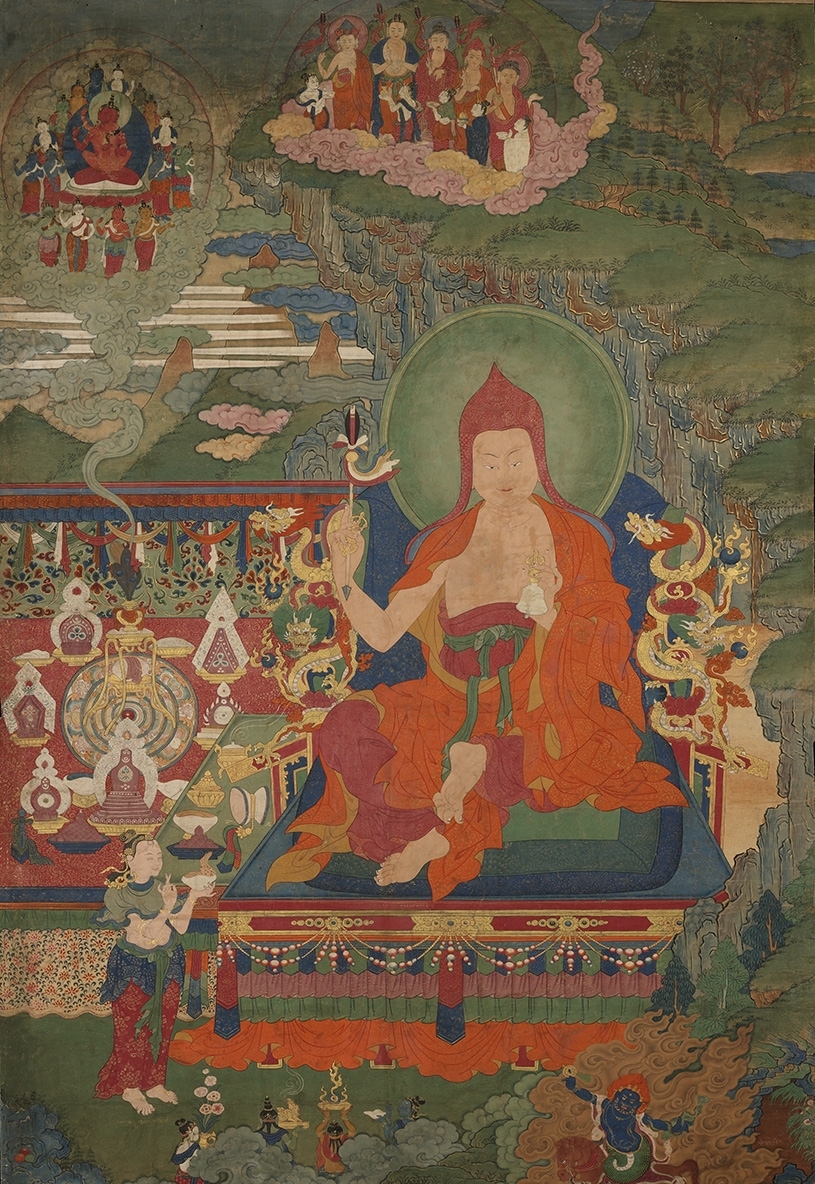
The eighth-century master Namkhai Nyingpo, one of the twenty-five disciples of the Indian master Padmasambhava, is shown in this painting dressed in monastic robes and holding an arrow symbolizing longevity in his right hand.
To his right is a ritual space arrayed with the materials he will use while performing a long-life ritual. This assemblage centers on a sacred circle, or mandala, upon which a tripod sits and supports a long-life vase festooned with peacock feathers. Emanating out of this structure is the assembly of immortality deities that is invoked in the ritual, seen at the upper left.
Namkhai Nyingpo along with Gyelwa Jangchub transcribed and concealed the biography of Yeshe Tsogyel, Padmasambhava’s consort and foremost disciple, which was revealed by Taksham Nuden Dorje in the seventeenth century.
Certain details of this depiction seem to follow a textual account of “The Dialog of Namkhai Nyingpo with Princess Dorje Tso,” with the princess depicted at his lower right holding a skull cup. The story was written by the great scholar from Kham Province Jamgon Kongtrul (1813–1899), suggesting a nineteenth-century date for this painting. This evidence is in accord with its painting style, which was popular in Kham during that period.
27 5/8 x 20 5/8 in.
C2006.66.20, HAR678
- https://dev.rubinmuseum.org/images/content/769/c2006.66.20har678__zoom.jpg
- https://dev.rubinmuseum.org/images/content/769/c2006.66.20har678__zoom.jpg

